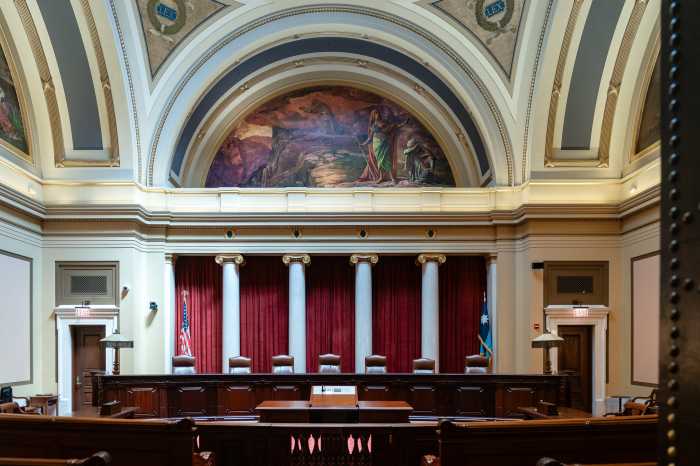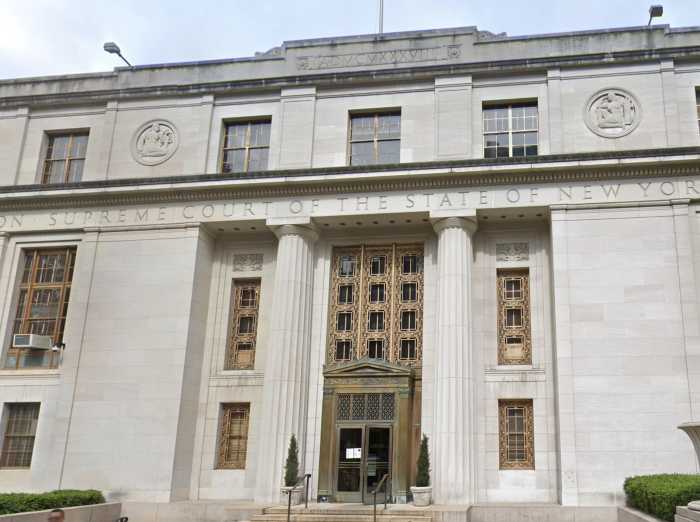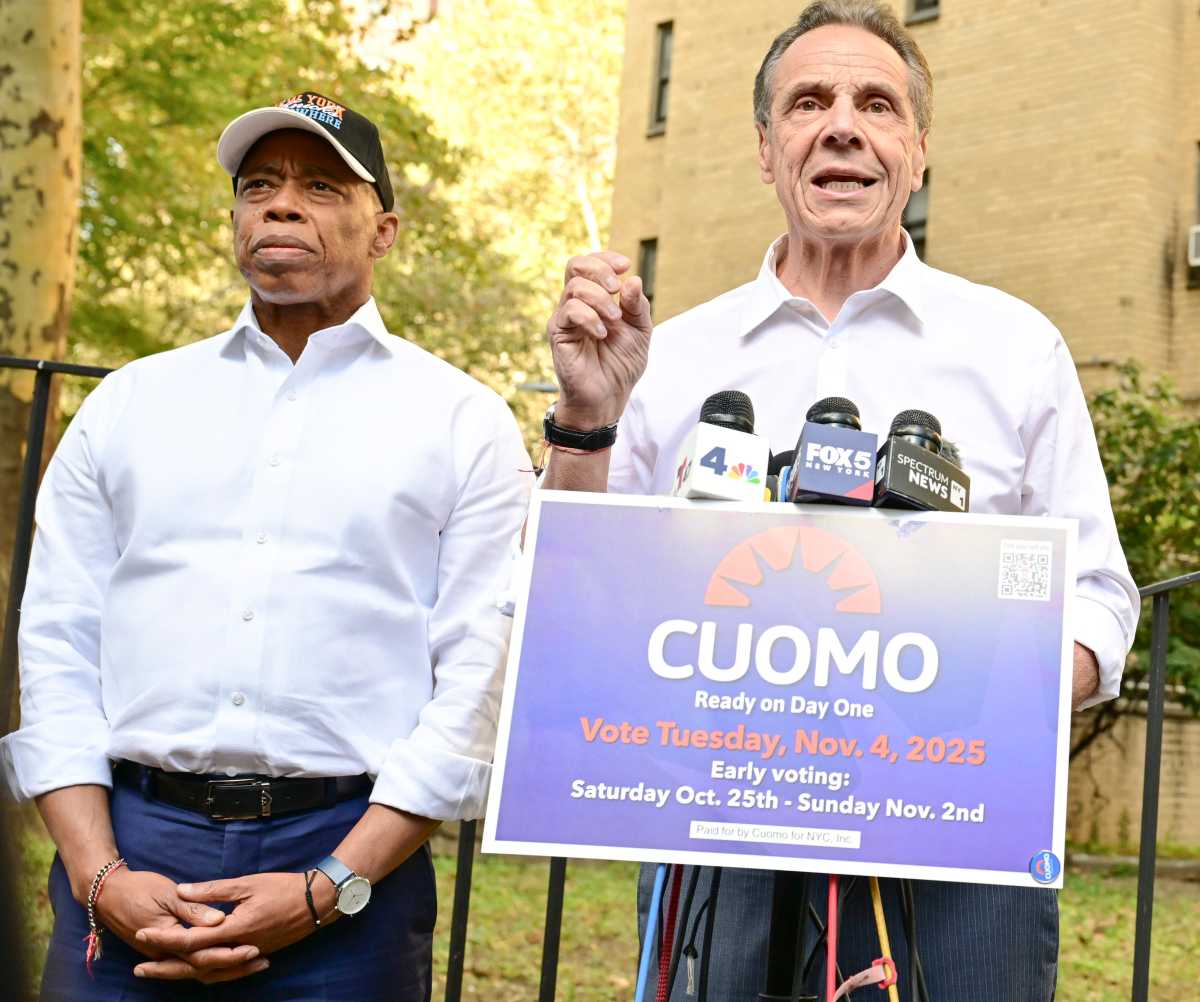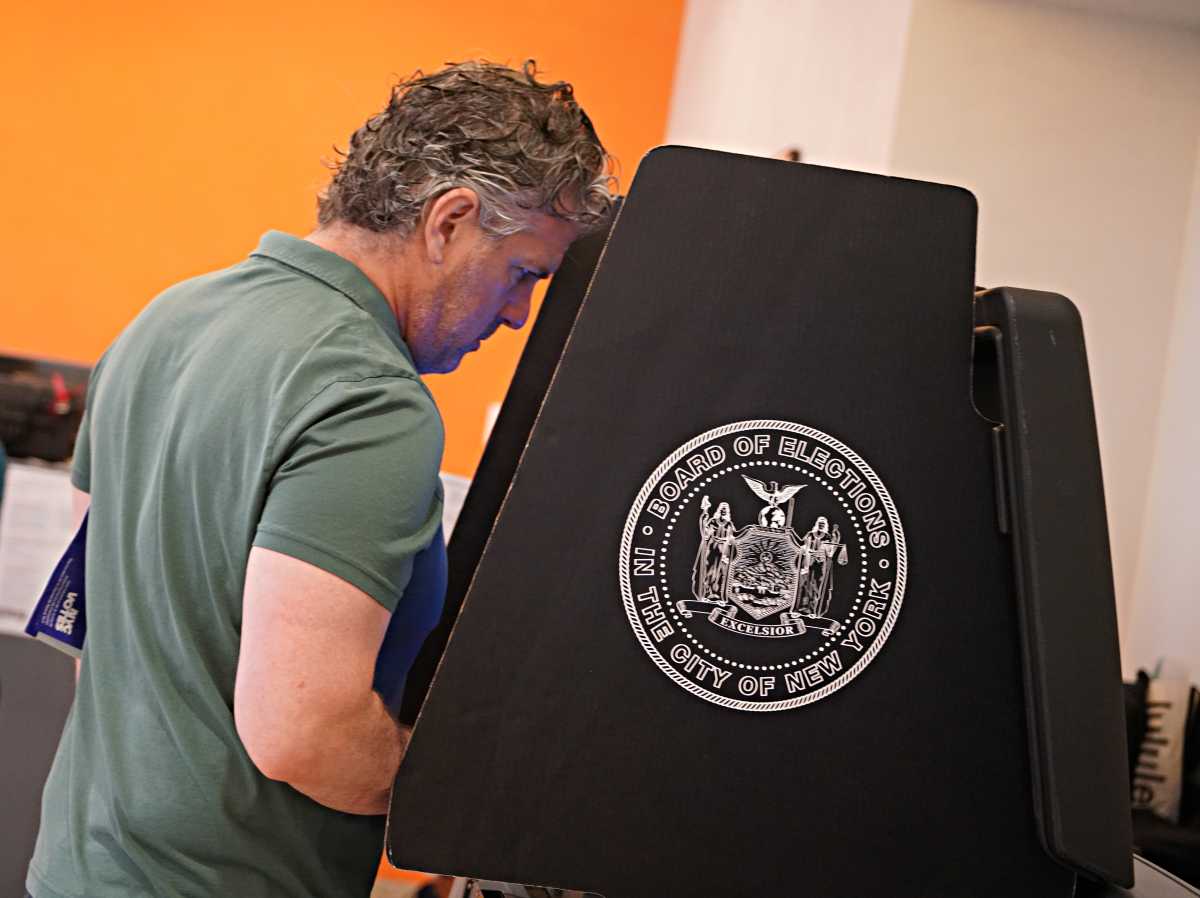Ontario court rules for same-sex marriages,says ban violates Charter of Rights
By ARTHUR S . LEONARD
A unanimous three judge panel of the Ontario Superior Court of Justice ruled on July 12 that denial of the right to marry to same-sex couples violates the Canadian Charter of Rights and Freedoms, which Canada’s Supreme Court has interpreted to ban sexual orientation discrimination by the government.
The decision directly contradicted a ruling by a single justice of the British Columbia Supreme Court issued last October, now on appeal to that province’s court of appeals. A ruling on same-sex marriage is also expected shortly from a Quebec court. The three separate cases in different provinces will likely leading to consideration of the issue by the Supreme Court of Canada in the not-too-distant future.
The three judges disagreed about the appropriate remedy in the case, so there will be no direct judicial remedy within the Ontario courts for at least two years. There is a possibility that the national government will decide to short-circuit the judicial process by simply following the lead of the Netherlands and amending federal marriage law to allow same-sex marriages.
In 2000, the federal Modernization of Benefits and Obligations Act essentially granted same-sex couples the same rights as married couples under 68 different federal laws, but specified that the reforms were not to be construed as changing the definition of marriage, which remained a union of one man and one woman.
The Ontario ruling consolidated two cases involving a total of ten same-sex couples sent directly to the regional court level by a trial judge.
Under the Canadian Constitution Act, the federal Parliament has jurisdiction to determine the qualifications for a marriage, while the individual provinces have responsibility to specify the formalities required to contract or dissolve a marriage. The federal Parliament’s Marriage Act does not specify that only an opposite-sex couple may marry, instead using gender-neutral language. However, as a matter of common law, or judge-made, rules derived from English law, Canadian courts have long taken the position that a legal marriage can only be contracted between one man and one woman.
In last year’s British Columbia case, the court ruled that when Parliament was given authority to determine the qualifications for “marriage,” the constitutional authors were assuming the established common law meaning of marriage. Thus, the common law definition of marriage could not be changed except by constitutional amendment.
In his opinion in the Ontario case, Justice Harry LaForme decisively rejects this, finding that Canadian jurisprudence follows a “dynamic interpretation” approach under which the court brings present-day sensibilities to its interpretation of the constitution. LaForme’s opinion provides the basic constitutional analysis, weighing the common law definition against the Charter of Rights and Freedoms, Canada’s equivalent of the U.S. Bill of Rights and Fourteenth Amendment.
The Canadian Charter includes an equal protection and benefits section that prohibits discrimination on the basis of race, national or ethnic origin, religion, sex, age, and disability. Several years ago, the Supreme Court ruled that “sexual orientation” is an analogous ground on which discrimination is also prohibited.
This finding provided the basis for a significant 1999 ruling finding that same-sex couples are entitled to the same government benefits as married couples, which triggered passage of both the 2000 federal benefits law and similar measures in many of the provinces.
Clearly, the next step would be to require the government to let same-sex couples marry on the same basis as opposite-sex couples, and LaForme boldly takes on the issue, finding no principled basis by which the government can defend refusing to do so. LaForme ruled that under the Charter, the common law marriage rule can only stand if the government shows that it is justified on urgent policy grounds. LaForme found that no such justification had been provided.
LaForme rejects out of hand the kind of compromise worked out in Vermont, where the legislature passed a civil union law in response to the state supreme court’s conclusion that same-sex couples were entitled to the same rights and benefits as married opposite-sex couples. He characterized it as a “separate but equal” solution not valid under modern principles of equality. Furthermore, the plaintiffs in this case did not focus their claim on the rights and benefits of marriage, but rather as an equality claim for entitlement to be able to form marriages just as non-gay people do.
As for a remedy, LaForme concluded that the court should declare the common law definition of marriage invalid and adopt a new common law rule defining marriage as available to any two persons, regardless of sex. (One of the partially dissenting judges on the Vermont Supreme Court similarly argued that the equality requirements of the state Constitution required no less than opening up marriage to same-sex couples without further delay.)
However, neither of the other judges was willing to go quite that far, even though both expressed agreement with LaForme’s basic legal conclusions that nothing in Canadian federal statutory law would ban same-sex marriages, but that existing common law bans them, and that the common law rule violates the Charter of Rights and Freedoms. The most that Regional Senior Justice Robert Blair and Associate Chief Justice Heather Forster Smith would agree to was a declaration that the common law rule is invalid.
In a lengthy and thoughtful opinion, Blair pointed out that the Constitution Act gives Parliament the authority to legislate on marriage, and opined that in a democratic society the appropriate place for making a decision about how to accommodate the Charter and the institution of marriage is Parliament. Blair proposed that the Parliament and the provincial legislatures be given two years to study the impact that same-sex marriage would have on other significant legal doctrines and to take a first crack at a legislative solution. If the Parliament fails to act in that period, he would vote in favor of adopting LaForme’s proposed common law rule. Also, if the Parliament’s solution dissatisfies the plaintiffs, they could come back to the court with a challenge.
Smith’s brief opinion focuses almost entirely on the remedial issue. She agreed with Blair’s plan to suspend the judgment for 24 months, but was critical of his commitment to vote for LaForme’s common law rule if no action were taken. She was also not ready to signal agreement with LaForme’s contention that a “separate but equal” institution for same-sex couples would be out of the question. Smith was clearly prepared to wait 24 months before deciding what, if anything, to do next.
Thus, there is a unanimous decision that the current exclusion is unconstitutional, and a 2-1 vote in favor of a two year delay to give Parliament an opportunity to act, with a commitment by at least two of the judges that if Parliament fails to act, the common law rule will be changed by the court. But none of these judges entertains the delusion that they would have the final word in such a situation, there being at least two levels of judicial review above this court.
The court’s opinion brought restrained jubilation among the plaintiffs and the gay rights movement in Canada, which participated in an amicus capacity through EGALE, the national gay rights political organization, which had been the lead plaintiff in the British Columbia case. A couple of the plaintiffs showed up at Toronto City Hall demanding marriage licenses, but were told by the clerk that she could not issue one until advised further by legal counsel.
On June 16, Ontario Premier Ernie Eves announced that his Conservative government would not be appealing the court decision, leaving the federal government in Ottawa as the only party that can appeal.
“Everybody has their own personal point of view on this issue,” Eves said, according to a report in the Toronto Star. “My point of view on this issue is that if two people decide that they want to be in a union, why would I interfere with that?”
Eves added that he would urge the federal government “to get on with what the court has decided and to do something about the issue.”
Ralph Klein, the Alberta premier, however, urged the federal government to appeal the Ontario decision, saying that his province has no plans to recognize same-sex marriages.
“Most Albertans believe that marriage is fundamentally a union between a man and a woman,” the Star quotes a Klein spokesperson as saying.
Meanwhile, Quebec, awaiting its own same-sex court ruling, agreed last month to a new law recognizing gay unions and granting equal parental rights for same-sex couples.
The initial reaction from the federal government has been cautious. While officially noncommittal, Justice Minister Martin Cauchon was quoted in the Star praising the approach taken in Quebec.
“If we decide to do something, there''s many ways,” Cauchon said, according to the Star. “I mean, look at what has been done in many countries in the world. The province of Quebec is a good example, and other countries as well.”
A political settlement, however, may be an impossibility for the Liberal Party government of Prime Minister Jean Chretien. In passing the 2000 Benefits Act, the Liberals included the language about marriage’s common law definition as a concession to win the support of Conservatives. The initial restraint of the Liberal government’s reaction may signal a deep desire by leaders to avoid a gut-wrenching national referendum about amending the Canadian Constitution to overrule the Ontario decision.



































